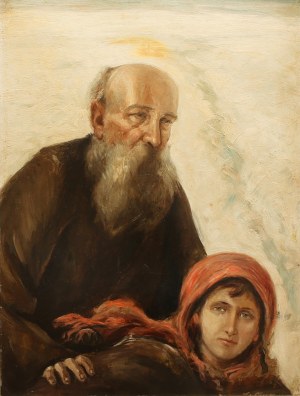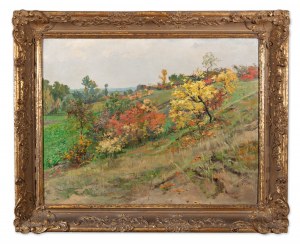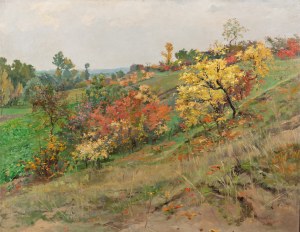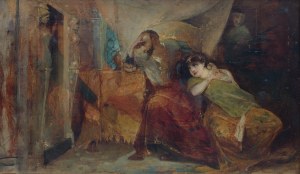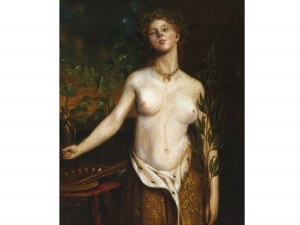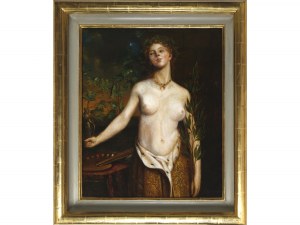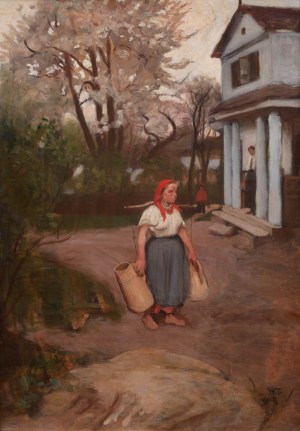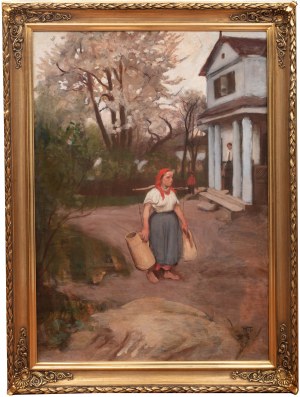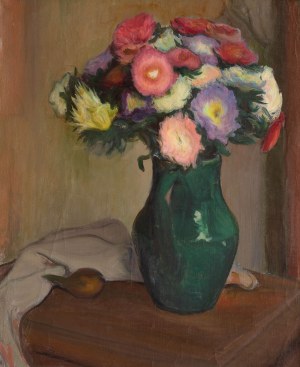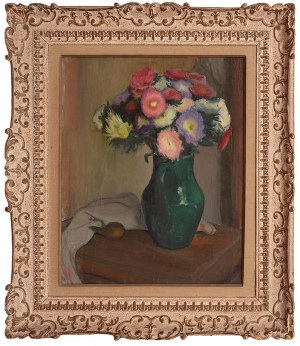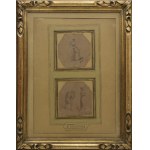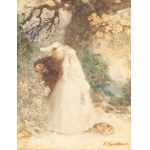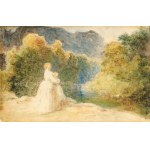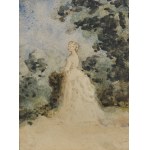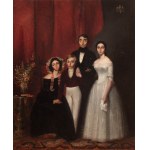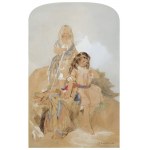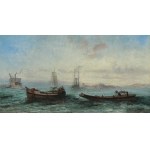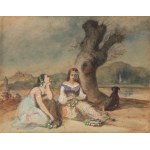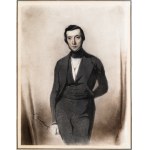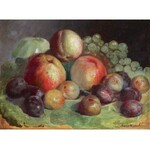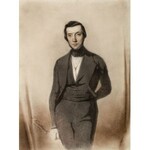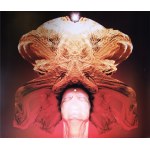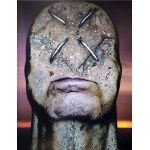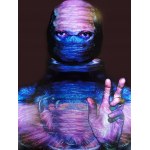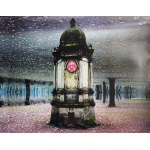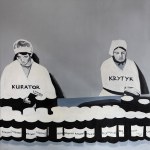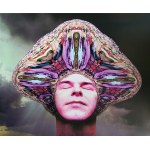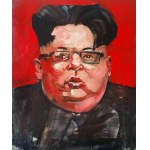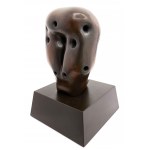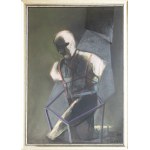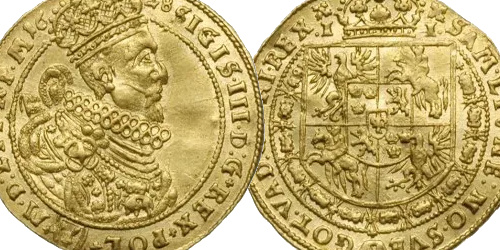10.5 x 13.0 cm - watercolor, paper signed p.d.: T. Kwiatkowski
Bibliography:
- A. Melbechowska-Luty, Teofil Kwiatkowski 1809-1891, Institute of Art of the Polish Academy of Sciences, Wrocław-Warszawa-Kraków 1966, p. 169, cat. nos. 289, 290, 291.
Krakowiak belongs to a series intended to be an illustration of customs and games of the Polish people, to which the emigrants staying in Paris were so longing. Compositions with Polish folk motifs were considered original and exotic by the French public. There is a well-known elaborate scene of a village party (Paysans polonais en fete), in an oil version from 1861 and repeated in a watercolor replica, which was presented at the Society for the Encouragement of Fine Arts in Warsaw in 1863. On the other hand, preparatory sketches, mentioned in a list of Kwiatkowski's works compiled by Aleksandra Melbechowska-Luty, a researcher of his work, show krakowiak in dance movement. Two compositions titled Krakowiak and one titled Costume Ball at the Hôtel Lambert are dated by Melbechowska-Luty before 1862, thus we can similarly date the presented watercolor.
Teofil Kwiatkowski (Pułtusk 1809 - Avallon in Burgundy 1891) - an outstanding representative of Romanticism in Polish painting - studied painting at the Department of Fine Arts at the University of Warsaw under A. Brodowski and A. Blank in 1825-1830. As an officer of the 4th infantry regiment, he fought in the November Uprising; after its defeat, he emigrated to France, where he remained for the rest of his life. he initially stayed in Avignon, later in Paris. Here he still studied under A. Toussaint, P. Senties, J. L. Dulong and L. Cogniet. He maintained close contacts with the émigré community, including the family of the Princes Czartoryski, Adam Mickiewicz, Frederic Chopin, Cyprian Kamil Norwid, and Teofil Lenartowicz. He repeatedly portrayed Chopin (including on his deathbed), to whom he also dedicated a large, symbolic composition, Ball at the Hôtel Lambert - Chopin's Polonaise. He painted beautiful landscapes from Provence and Burgundy, imbued with a romantic aura. He painted oil paintings and very numerous, masterful watercolors - portraits, landscapes, genre scenes, patriotic, costume and allegorical scenes. His works are characterized by unsurpassed color qualities, an emotional attitude to nature, as well as a typically romantic inclination towards fantasy and metaphor, often tinged with a shade of melancholy. The artist exhibited, among others, at the official Paris Salons (1839-1881), and also sent his works to national exhibitions (1862-1873 TZSP in Warsaw). His paintings, watercolors, drawings are in the Mickiewicz Museum in Paris, in the collections of the National Museums in Warsaw, Krakow and Poznan, others are in private hands in France. They are rare on the antiquarian market.
Recently viewed
Please log in to see lots list
Favourites
Please log in to see lots list













